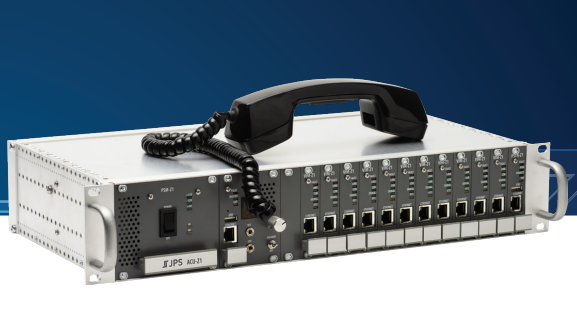9M2PJU
audio
audiophile
debian
fedora
music
realtime kernel
ubuntu
audioconfiguration, audioengineering, audiooptimization, Audiophile, daw, DigitalAudio, linuxaudio, linuxdesktop, linuxgaming, linuxmusic, linuxperformance, linuxproaudio, linuxsound, lowlatency, musicproduction, opensourceaudio, pipewire, realtimeaudio, rtkernel, soundsetup
9M2PJU
0 Comments
Unleash Sonic Perfection: Configuring PipeWire with an RT Kernel for Low Latency Audio
For audio enthusiasts, musicians, and producers seeking the absolute pinnacle of audio performance on Linux, combining PipeWire with a real-time (RT) kernel is a game-changer. This dynamic duo delivers remarkably low latency, ensuring your audio experience is smooth, responsive, and crystal clear. Let’s dive into a step-by-step guide to unlock this sonic potential.
Why an RT Kernel and PipeWire?
- RT Kernel: Designed for time-critical applications, an RT kernel minimizes latency by prioritizing real-time tasks, crucial for audio processing.
- PipeWire: A modern multimedia framework that excels at handling audio and video streams, offering superior performance and flexibility compared to older solutions.
Step-by-Step Guide
1. Verify Your RT Kernel is Running:
Before anything else, confirm your RT kernel is active. Open your terminal and run:
Bash
uname -r
You should see “rt” in the output, indicating a successful installation (e.g., 5.15.0-xanmod1-rt).
2. Install PipeWire and Essential Packages:
Install PipeWire and its necessary components using your distribution’s package manager:
- Debian/Ubuntu:
Bash
sudo apt install pipewire pipewire-audio-client-libraries pipewire-pulse pipewire-jack wireplumber
- Fedora:
Bash
sudo dnf install pipewire pipewire-pulseaudio pipewire-jack-audio-connection-kit wireplumber
- Arch Linux:
Bash
sudo pacman -S pipewire pipewire-pulse pipewire-jack wireplumber
3. Grant Real-Time Privileges:
To allow PipeWire to operate in real-time, configure the audio group:
- Edit the limits file:
Bash
sudo nano /etc/security/limits.d/99-audio.conf
- Add these lines:
@audio - rtprio 95
@audio - memlock unlimited
- Add your user to the audio group:
Bash
sudo usermod -aG audio $USER
- Log out and back in for the changes to apply.
4. Fine-Tune PipeWire Configuration:
- Create a custom configuration directory:
Bash
mkdir -p ~/.config/pipewire
- Copy default configurations:
Bash
cp /usr/share/pipewire/pipewire.conf ~/.config/pipewire/
cp /usr/share/pipewire/pipewire-pulse.conf ~/.config/pipewire/
- Edit
~/.config/pipewire/pipewire.conf:- Add desired sample rates to
default.clock.allowed-rates(e.g., 44100, 48000, 96000). - Set
default.clock.quantumto your preferred buffer size (e.g., 256 for low latency). - Set
default.clock.min-quantumto your minimum buffer size (e.g., 32).
- Add desired sample rates to
5. Optimize for Low Latency:
- Create a low-latency configuration file:
Bash
mkdir -p ~/.config/pipewire/pipewire.conf.d
nano ~/.config/pipewire/pipewire.conf.d/99-low-latency.conf
- Add these settings:
context.properties = {
default.clock.rate = 48000
default.clock.quantum = 256
default.clock.min-quantum = 32
default.clock.max-quantum = 8192
}
48000 Hz is perfectly adequate, 192000 Hz is generally only relevant in professional audio production or for audiophiles with very high-end equipment. Most people would not be able to tell the difference between the two.
6. Enable Real-Time Priority:
- Create a real-time priority file.
Bash
mkdir -p ~/.config/pipewire/pipewire.conf.d
nano ~/.config/pipewire/pipewire.conf.d/10-rt-priority.conf
- Add these setting.
context.modules = [
{ name = libpipewire-module-rt
args = {
nice.level = -11
rt.prio = 88
rt.time.soft = 200000
rt.time.hard = 200000
}
flags = [ ifexists nofail ]
}
]
7. Restart PipeWire:
Apply the changes by restarting PipeWire:
Bash
systemctl --user restart pipewire pipewire-pulse
8. Verify Low-Latency Operation:
- Check latency settings:
Bash
pw-top
- Verify real-time priorities:
Bash
ps -eo pid,cls,pri,cmd | grep pipewireTroubleshooting:
- Xruns (audio dropouts): Increase
default.clock.quantum. - High CPU usage: Use
htopto identify problematic processes. - CPU frequency scaling: Consider disabling it:
sudo cpupower frequency-set -g performance.
Important Notes:
- Finding the optimal settings requires experimentation based on your hardware.
- For advanced usage, consider CPU core isolation, and the realtime-privileges package.
By following these steps, you’ll be well on your way to achieving exceptional audio performance with PipeWire and an RT kernel. Happy listening!







Post Comment